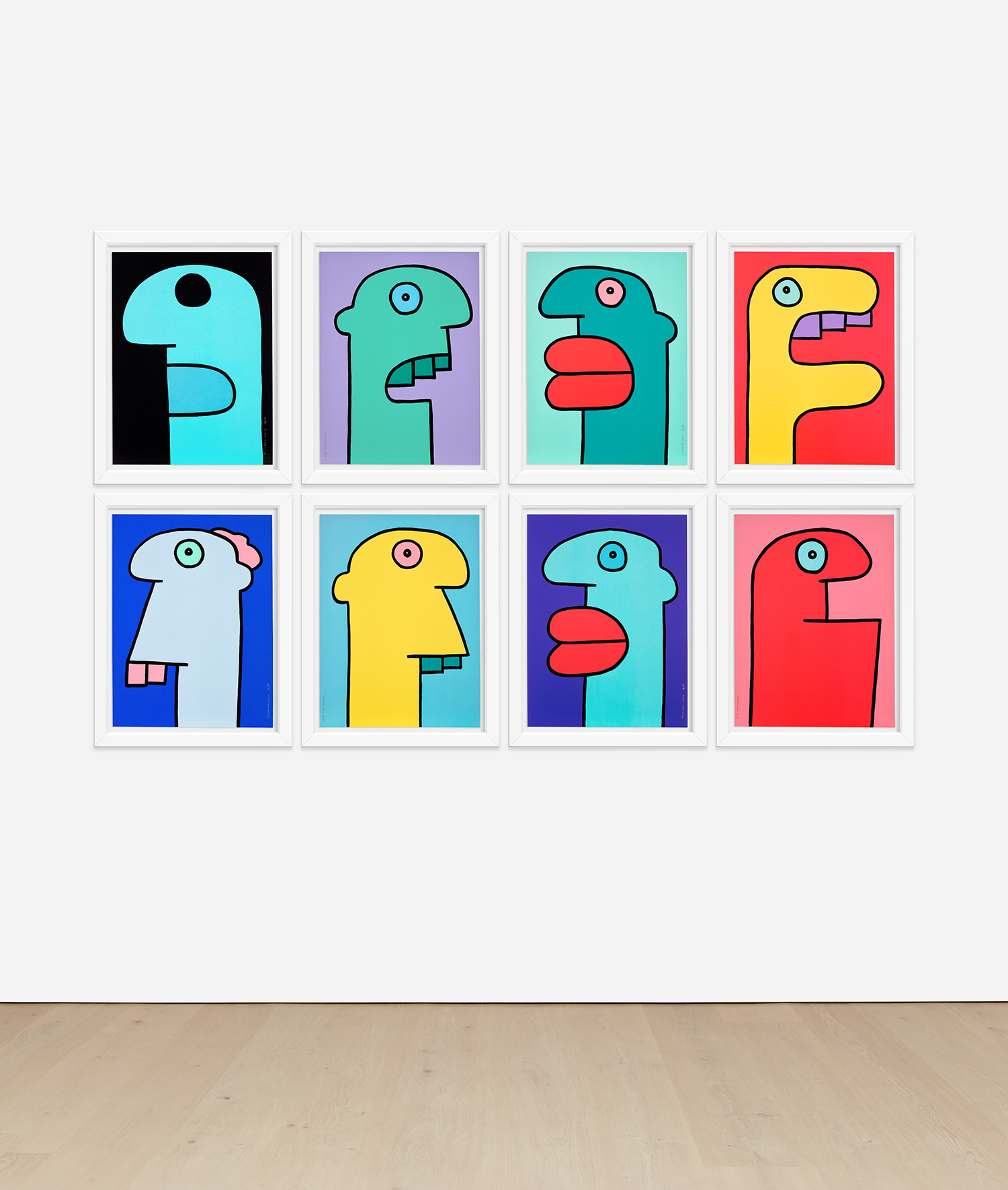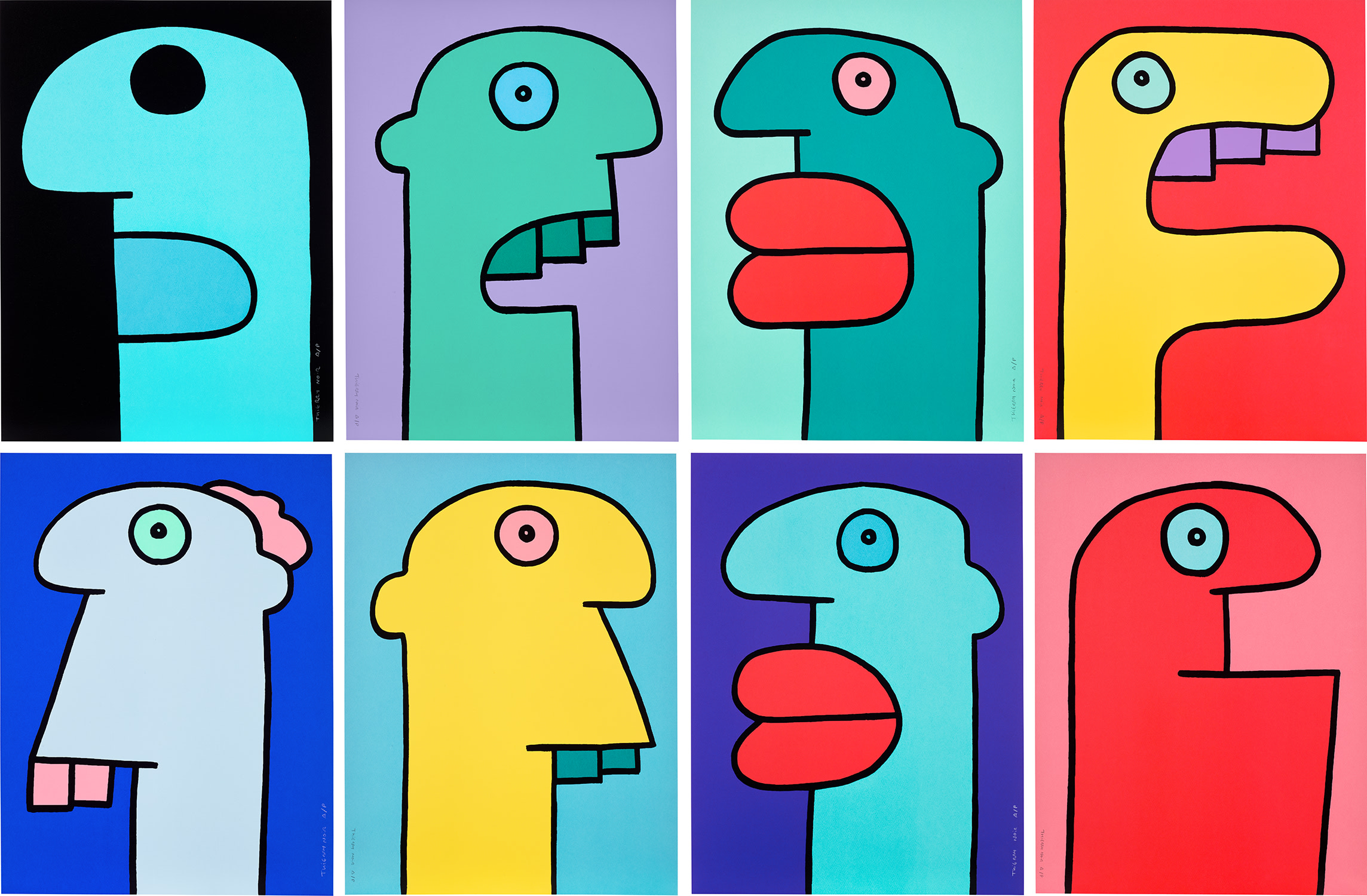



80
Thierry Noir
East Side Heads
2014
The complete set of eight screenprints in colours, on Somerset paper, the full sheets.
all S. 69 x 52 cm (27 1/8 x 20 1/2 in.)
All signed and annotated 'A/P' in graphite or white pencil (an artist's proof set, the edition was 25), published by Howard Griffin Prints, London, all unframed.